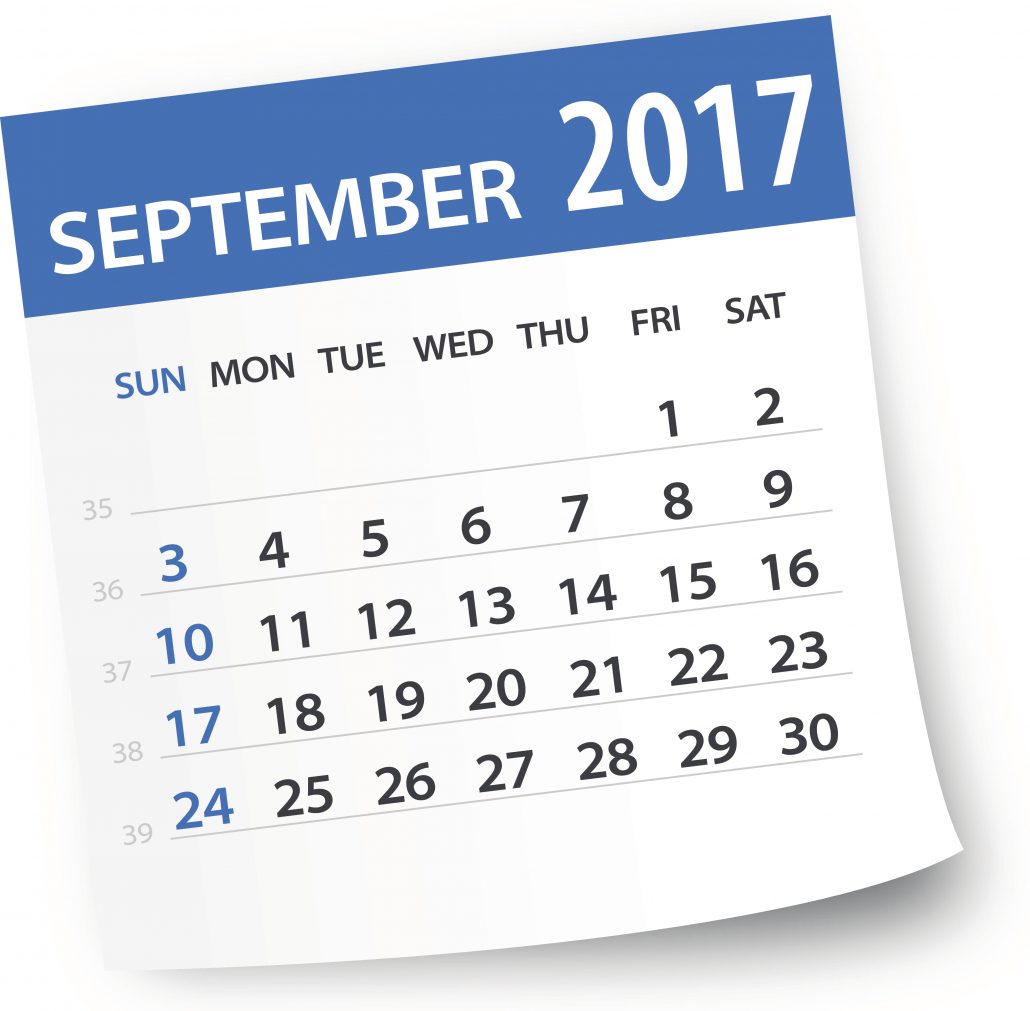by Justin Mckibben | Sep 6, 2017 | Alcohol, Binge Drinking, Celebrity, Drug Abuse, Fitness, Neen Williams, Recovery, Sober Fun

For many years Professional skateboarder Neen Williams lived a life of sleepless nights partying while creating a name for himself in the skater world. Born in Chicago, Illinois and currently shredding street tricks in his hometown of Los Angeles, California Williams has managed to attract sponsorship from several brands including:
- Deathwish
- Circa Footwear
- Thunder Trucks
He also has a line of board designs that are all pretty slick. Neen Williams says he’s been skateboarding since he was about 13 years old, and with the territory he found himself smoking and drinking alcohol on a regular basis. Now, at age 31 he has turned his passion into his point of reference for a more sober approach to life.
Sobriety and Skating
Williams admits that he used to have a very different perspective of the life of a skateboarder himself. In a recent video with VICE he states,
“Skateboarding forever was like ‘drink boozes, smoke, we don’t stretch we don’t work out,’ and later in the interview he explains, “Back in the day I used to wake up late, eat like a burrito and slam a beer; go out and skate, manage to get a trick, and it would just be party time again.”
“It would never stop. It was just like a vicious cycle. There were a couple nights I would wake up at 6 or 7 (PM) and it would be dark outside.”
In that vicious cycle, Williams talks about needing days at a time to recover from drinking and partying, and on the last day when he finally felt good enough to get back to skating he would immediately go back to the partying as well.
He goes on to say that he wishes he had known all of this when he was a teenager, but even at 31 years old he is still learning so much. During part of the video interview Neen Williams says that he knows if you take care of yourself, you can skate forever. That, he says, is why he now makes the effort to eat so well and train his body,
“This is why I do all this healthy stuff for myself… because that is what I want, is to skate forever.”
That seems like a really legit reason to take care of yourself; to do what you love forever!
Originally Williams said he decided not to drink for the 6 to 8 month healing period he was told he would need for a torn ACL. Since then, it appears his lifestyle has changed dramatically to make his dream work.
Health Food and Fitness
Even though some may not immediately associate a balanced and healthy diet, along with regular exercise, it appears to have become a crucial element to Williams’ evolution as a skater.
On VICE Williams prepares a breakfast of acai bowls that honestly look stacked with natural goodness. Williams tops off one of the meals he makes- serious serving of what looks like well-blended fruits and vegetables- with diced pineapples and what I would guess to be barriers, almond butter, and granola, it looks like heaven.
You also get to see Williams break out a yoga mat and start stretching himself out. From there he said since Saturday isn’t a week day, he warms up with a quick 200 in to start the day.
When talking about his workout, he compares it to any other athlete. He says football players train to do what they do and they are covered in pads and protective gear. While he admits football players have 300lbs of muscle falling on them, he says the pro skater is usually out in the bare minimum, if anything, fighting sometimes face-first with concrete.
The Deathwish Team Manager, Jay Thorpe, makes a cameo during a street-side video shoot and says it is “really rad to see” when talking about Williams cleaning up his act and committing to the thing he wants to do for the rest of his life.
Williams says that while he doesn’t judge anyone, and doesn’t regret his party days, he has seen a lot of people fall because of it and he likes what he’s doing now. Probably a big inspiring part of Williams’ story is that he says he is glad he went through it and worked his way out of it to be the person he wants to be.
Athletes are put under a lot of pressure to succeed, even professional skateboarders and other extreme sports athletes. Sometimes the lifestyle of pro-sports stars can influence issues with substance use or addiction. Too many talented individuals are held back by these obstacles, but it never too late to get a fresh start toward a better, healthier expression of yourself. If you or someone you love is struggling with substance abuse or addiction, please call toll-free now.
CALL NOW 1-888-922-5398
by Sher Delva | Sep 5, 2017 | Addiction, Addiction Stigma, Addiction Treatment

September 2017 marks the 27th anniversary of National Recovery Month. The purpose of National Recovery Month is to increase awareness of mental and substance use disorder and celebrate people who DO recover.
The theme for National Recovery Month 2017 is: Join the Voices for Recovery: Strengthen Families and Communities.
This year’s theme highlights the value of family and community support. National Recovery Month invites individuals in recovery and their family members to share their personal stories and successes to inspire and encourage others.
The Purpose of National Recovery Month 2017
The Substance Abuse and Mental Health Services Administration (SAMHSA), within the U.S. Department of Health and Human Services (HHS), is sponsoring National Recovery Month.
Back in 1992, Congress established SAMHSA to help make information and services more accessible to those in need of assistance.
SAMHSA Strategic Initiatives have various purposes, including:
- Providing resources for people with mental and substance use disorders
- Supporting the families of those struggling with mental and substance use disorders
- Building resilient and supportive communities
- Promoting prevention of costly behavioral health problems
National Recovery Month’s overall goal is to educate Americans that addiction treatment and mental health services can enable those struggling to live a healthy and rewarding life.
National Recovery Month sends the message that:
- Treatment is essential and effective
- Prevention does work
- People can and do recover
Every September, thousands of prevention, treatment and recovery programs host events and activities intended to educate the public about recovery. There are millions of lives who have been transformed through recovery. National Recovery Month is about raising awareness of the treatment programs out there. It is also about celebrating the successes of those who have recovered.
Broward Recovery Month Celebration
If you live in the South Florida area, you should consider attending a SPECIAL event occurring in Broward County.
Broward’s Recovery Month Celebration: “honors outstanding individuals who have made significant contributions to helping people in our county remain sober.”
Broward Recovery Month invites you to attend a special recovery event on September 9th at the War Memorial Auditorium. The event will occur from 11 – 3 and there will be food, fun, and inspiration for all. Special guest speakers Heidi and Dug McGuirk will be speaking at this year’s event. Please see our recent article for more information.
The Importance of National Recovery Month
Overall, the mission of National Recovery Month 2017 is to show Americans that addiction and mental illness are not life sentences. There is support out there. There are millions of Americans who have sought treatment and have recovered. Furthermore, through education, we can prevent these conditions from becoming worse. Awareness is the key.
The message that recovery CAN happen changes the face of addiction from one of hopelessness to one of possibilities and success.
There is a way out. Often, the media focuses on those struggling with addiction, however, there are plenty of recovering addicts who have managed to lead successful healthy lives. These successes tend to go unnoticed.
National Recovery Month 2017 helps spread the message of recovery and acknowledge these accomplishments. If someone you know is struggling with addiction or mental illness, give us a call. There is a way out and we can help. Do not wait. Call toll-free today.
CALL NOW 1-888-922-5398
by Justin Mckibben | Sep 5, 2017 | Drug Abuse, Drug Policy, Heroin, LSD, MDMA

(This content is being used for illustrative purposes only; any person depicted in the content is a model)
For anyone out there who (like me) loves the allure and intrigue of conspiracy theories, the new upcoming mini-series Wormwood on Netflix should absolutely be a Roswell-sized-blip on your radar. The show is described as part documentary, part drama (and in my early predictions- all awesomeness). Set to the backdrop of the 1950s and 1960s, the show is going to delve into the notorious Project MK-ULTRA.
Should we be excited about an intense take on CIA spooks, mind control experiments and a murder mystery?! Uh… YEA! Well, at least I am, obviously. The trailer released shows off cinematography that looks dark, edgy and eerie, with a tone that fits the content. For a little backstory about the twisted conspiracy behind the show Wormwood on Netflix, let’s take a face plant down the rabbit hole of Project MK-ULTRA.
Project MK-ULTRA
The operation began in the early 1950s and was officially sanctioned in 1953. It was designed and undertaken by the United States Central Intelligence Agency (CIA) during the Cold War era when- as the trailer says- “the most dangerous weapon is information.” MK-ULTRA was kept hidden for about two decades due to the fact that the experiments were done on human subjects, which were at times illegal and most notably because the subjects did not consent and had no idea what was being done to them. The organized efforts of the project included entities such as:
- The Scientific Intelligence Division of the CIA
- Special Operations Division of the U.S. Army’s Chemical Corps
These invasive and supposedly damaging experiments were intended to identify and develop drugs and procedures to be used in interrogations and torture. The idea was to learn how to weaken the individual to force confessions through mind control, but the implications of these methods may also suggest far more sinister ways to utilize these tactics.
The Conspiracy
For years people thought it was truly a paranoid dream, and considering the massive scope of the project, once finally revealed, there is no wonder why. According to a 1984 broadcast of 60 Minutes, MK-ULTRA involved more than 130 research programs within various known institutions, including:
- 44 of them being colleges and universities
- 15 research foundations, chemical or pharmaceutical companies
- 12 hospitals or clinics
- 3 prisons
Project MK-ULTRA conducted many illegal activities. One incredibly controversial method was the use of unsuspecting U.S. and Canadian citizens as test subjects. But the most notorious of all is probably the use of LSD and other chemicals to manipulate people’s mental states and alter brain functions.So essentially anyone from inmates and hospital patients to college students and Big Pharma customers could have been exposed to some of the most mind-bending, drug-induced illusions without their knowledge at the will of the United States government.
The world remembers well learning that government agencies were forcing hallucinogenic drugs onto citizens, but this is just one method of psychological torture via drug abuse in Project MK-ULTRA.
Forced Drug Experiments
While LSD is the drug most commonly associated with MK-ULTRA, the program is said to have utilized several other drugs in their illegal testing, including:
- Heroin
- Morphine
- Psilocybin (magic mushrooms)
- Methamphetamine
- Barbiturates
- MDMA
- Temazepam
- Mescaline
- Scopolamine
- Marijuana
- Alcohol
- Sodium
- Pentothal
The CIA Cover Up
To touch on the timeline of Project MK-Ultra being exposed:
1973- CIA Director Richard Helms ordered all MK-ULTRA files destroyed
1975- The Church Committee of the U.S. Congress first brought MK-ULTRA to the attention to the public.
A Gerald Ford commission was tasked to investigate CIA activities within the United States. Investigative efforts were hampered by the fact the destruction of the documents in 1973.
1977- Senate hearings began following a request from the Freedom of Information Act that uncovered a cache of 20,000 documents connected to MK-ULTRA.
2001- Even more information regarding MK-ULTRA became declassified
Now the world is well aware that the CIA, in cahoots with other entities, was behind hundreds of mind-control experiments. These horrific tortures and inhumane experiments are said to have left some people mentally and emotionally crippled for life. Hopefully, the new series Wormwood on Netflix will also give us a closer look at home some of these victims were able to recover, if at all.
Wormwood on Netflix makes it Personal
Academy Award-winning director Errol Morris gives this illustrious conspiracy story new texture and connection using dramatic reenactments with real-life interviews. Beyond that, the series Wormwood on Netflix also stands to humanize the drama, making it a much more personal and relatable scenario.
Enter the incarnation portrayed by Peter Sarsgaard of Dr. Olson. The real-life CIA biochemist Dr. Frank Olson died after falling 10 stories from a New York City hotel room in 1953. Dr. Olson’s death at the time was ruled a suicide. However, his family and others believe that he was actually assassinated by the CIA. Dr. Olson’s son, Eric Olson, is also part of the series.
Eric Olson and his brother Nils have made it their life’s mission to uncover the truth about their father’s death. Eric Olson has spent over 60 years investigating.
As if an indirect admission of fault, the Olson family actually received a settlement of $750,000 and a personal apology from then-President Gerald Ford and CIA Director William Colby. This came 20 years after Olson’s death in 1976, after all the documents pertaining to MK-ULTRA began to surface. Then in 1994, a second autopsy was conducted on the body of Frank Olson, which is said to have revealed injuries that had “likely occurred before the fall” leading many to believe that Frank Olson was killed by the CIA.
One way or another, Wormwood on Netflix is sure to be a very interesting ride. With the ominous overtone of impending espionage, chemical warfare, spy games and murder this show is set to take something that is so real it’s scary and packages it in a way that is sure to pull us in.
At risk of tempting a Netflix binge, there are some very good documentaries and other films related to substance abuse, drug policy and addiction. There are all kinds of resources out there to stay informed about the history of drug use and the risks associated with it. Find a way to learn more and if you or someone you love is struggling with substance abuse or addiction, please call toll-free now.
CALL NOW 1-888-922-5398
by Justin Mckibben | Sep 1, 2017 | Coping Skills, Family, Inpatient Treatment, Recovery, Self Improvement

The devastating path of Hurricane Harvey has caused unprecedented and catastrophic flooding throughout southeastern parts of Texas. The Lone Star State has been all over the news since the tropical cyclone touched down, becoming the first major hurricane to make landfall on American soil since Wilma in 2005.
Some areas received over 40 inches of rain in a 4 day period, with peak accumulations reaching as high as 51.88 inches. The flooding and damage from the storm has besieged hundreds of thousands of Texan homes, displacing over 30,000 people.
Since its initial landing in Rockport, Texas there are reports of at least 46 confirmed deaths.
Sadly, the tragedy is not yet over. As efforts continue to pour in to relieve the suffering communities, Brock Long calls Hurricane Harvey the worst disaster in Texas history. Long says the expectation of recovering from this destructive natural disaster will take many years.
Still, there is hope. Houston Mayor Sylvester Turner is telling the world that they are happily on the road to recovery. Turner states:
“We’ve turned a corner,”
Yesterday the Mayor also noted there are already numerous signs of hopeful progress, including:
- Declining shelter numbers
- Power restored to most of the region
- The Astros’ doubleheader on Saturday
- More Metro bus lines resume service Friday
- Shipping channel reopening on limited basis
Leave it to the state where they do everything bigger to have such an inspiring bounce back after facing such difficulties. Our thoughts and prayers are with everyone where the motto is friendship and the country is uniting to help those in need.
As the nation pulls together during a time of crisis, so too must an individual pull their own personal resources into maintaining their mental, emotional and physical well-being in the face of disaster. So to add more to the conversation, we want to talk about 5 ways to stay sober during a natural disaster.
The news of another possible threat in the form of Hurricane Irma has been worrying many communities, while there has yet to be a definite answer as to whether or not it will make landfall in the United States, and if so- where.
So let us talk about something that is important for those in the recovery community to keep in mind.
Trauma and Relapse
We want to point out that because natural disasters can be traumatizing experiences, they can put some who are struggling to overcome addiction in a more compromised position. These events stir up anxieties concerns important parts of life, like:
- Personal security
- Physical health
- Relationships
- Psychological well-being
Even healthy people with no history of substance use disorder are frequently traumatized by these sudden and uncontrollable events.
Therefore, it only makes sense that some who are unequipped with healthier coping mechanisms will often turn to trying to escape these fears with drugs or alcohol. It is their natural defense.
Some may find that the traumatic event itself does not inspire cravings, but the aftermath is far more influential. Survivors of natural disasters may be more vulnerable to relapse as they struggle to cope with what has happened.
5 Ways to Stay Sober During a Natural Disaster
-
Have a network
One way that people are able to stay sober during a natural disaster is that they have a strong network of reliable friends, other individuals in recovery and even sometimes counselors they can stay in contact with. Keep your A-team on speed dial and stay in touch with them, even when the disaster is over.
-
Keep honest
This is pretty much always crucial, but we should emphasize it because too many people will overlook it when it matters the most. Stay honest with those around you about your emotions and how the disaster has affected you, especially when you are feeling like you are in a bad place.
-
Maintain a routine
Having a routine, even in the face of tremendous difficulties, can help you to retain some semblance of normalcy while dealing with a tragedy. When trying to stay sober during a natural disaster you may find comfort and coping skills in the simple things like taking care of your hygiene, exercising or even meditating. Have a healthy routine to fall back on when the dust settles.
-
Help others
Helping others is already a huge part of continued sobriety for a lot of people. Many recovery programs promote a life-style that suggests helping others and being of service. Do what you can to be there for those around you, and your community. However, always remember to take care of yourself as well. Don’t push yourself too far and avoid putting yourself in danger.
-
Find a support group
While support groups already exist for those in recovery, sometimes they are especially useful with trying to stay sober during a natural disaster. Don’t rush out in the midst of something dangerous trying to get to a meeting, but immediately after the traumatic events seek out a support group or some form of counseling to help you process the tragedy. Even if you don’t feel specifically vulnerable at the time, it is healthy and productive to try and connect with others in a time of crisis.
In fact, if not for you… do it for them.
There is often no way to predict how something so damaging will show up in your life and what it may do to you physically, mentally or emotionally. Yet, having an effective strategy in place might help you be ready for anything.
Do everything you can to make sure that you stay sober during a natural disaster, so that one tragedy doesn’t create another in your life.
Stay safe everyone!
In the face of great adversity and turmoil we are gifted the opportunity to be better than our anxieties and our traumas. Staying sober during a natural disaster may not seem as important as just staying alive, but for some of us it is essentially the same. If you or someone you love is struggling with substance abuse or addiction, please call toll-free now. We want to help. You are not alone.
CALL NOW 1-888-922-5398





